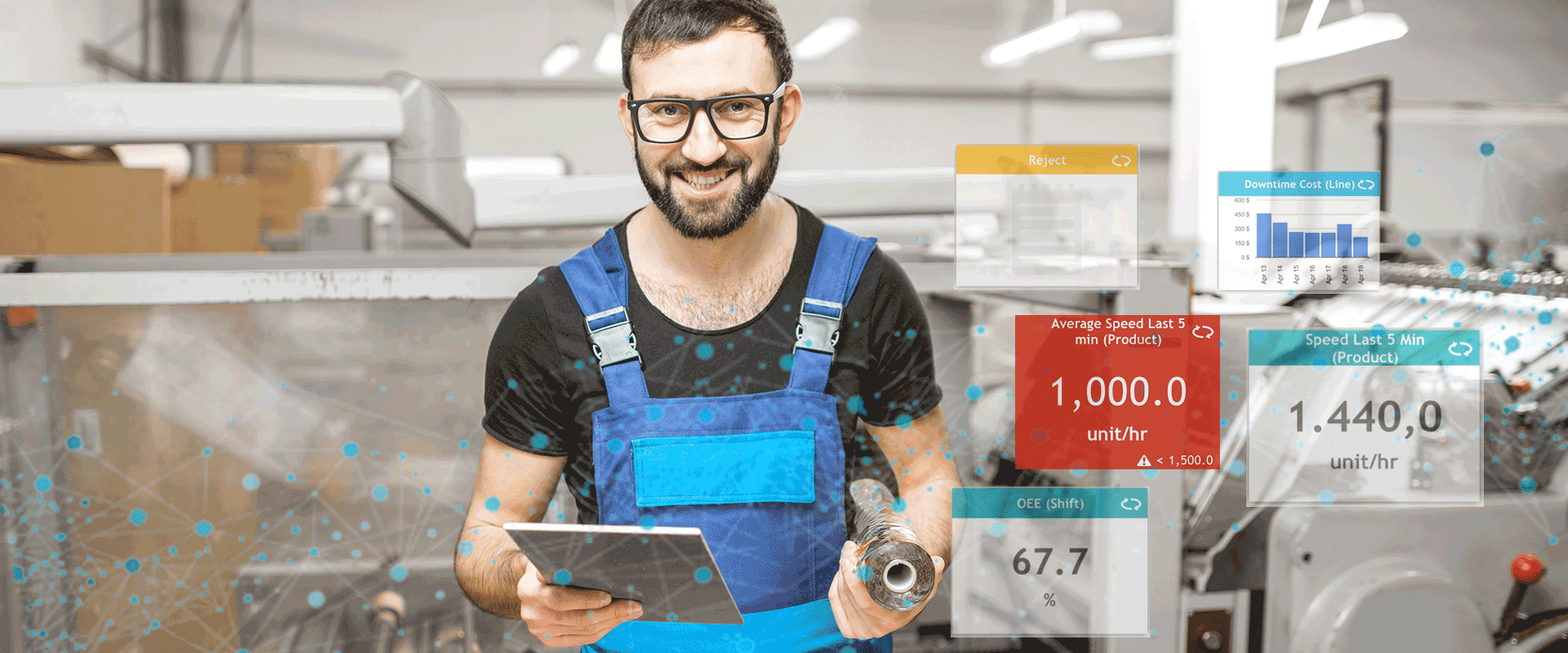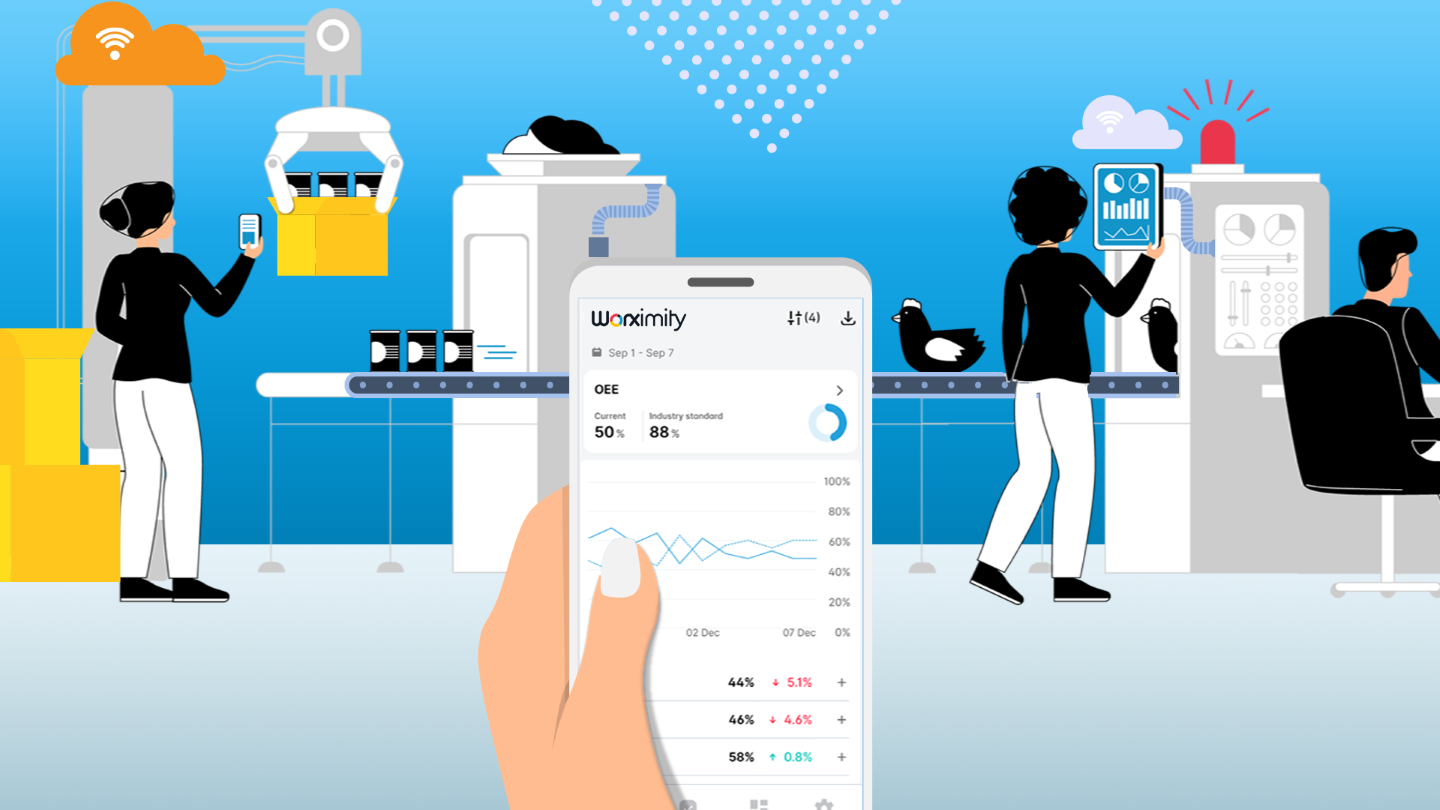If you’re responsible for improving manufacturing performance, you’re probably becoming aware of concepts such as the Connected Worker and Smart Factory Analytics. This article is meant to be an orientation to these concepts to provide helpful clarity and a collection of resources for you to further advance your knowledge.
About The Connected Worker
The concept of the connected worker has been with us since at least 2005. In the book Connected Workforce by Cisco, the writers present a case for the coming change in how workers relate to each other and to the businesses they contribute to. (We use the term ‘contribute to’ rather than ‘employed by’ as one forthcoming trend identified is the growth of contingent workers, the most well-known example would be Uber drivers).
They foresaw that technologies including mobile apps, virtual meeting and collaboration technologies, IoT (Internet of Things) devices and software and wearable devices would revolutionize where and how workers would produce value as well as how much value workers could create. Certainly the increase in remote office workers enabled by mobile devices and social collaboration software is one manifestation of the growth in connected workers. Digital HR notes that SMAC (Social, Mobile, Analytics and Cloud) has led to the ‘consumerization of HR’ which is forcing HR leaders to rapidly adapt their approach to recruiting, retaining and managing workers today
Across manufacturing, companies are experimenting with a variety of connected worker solutions. These range from wearable devices that provide haptic feedback (feedback through touch) such as a vibrating device that warns mining workers when a large piece of equipment is in motion and presents a hazard (Proximity Warning System) to Virtual Reality Goggles that facilitate the repair of complex machinery. The options for applying connected worker technology in manufacturing appear to be endless.
The Connected Worker & Smart Factory Analytics
With respect to manufacturing productivity however, it’s clear that we’re seeing a revolution in how data can be gathered throughout the production value chain and presented as actionable information. Here we delve into a subset of connected worker technology, which is Smart Factory Analytics. In our article Industry 4.0 and Efficiency - A Global Perspective, we revealed that, with respect to these technologies, “...the ROI is being driven by higher efficiencies and the resulting cost savings” and that the focus of connected worker technologies tends to be the implementation of Smart Factory Analytics.
It’s now possible to easily extract data from a wide range of production machinery, and present actionable information in real time. The end result, connecting workers and managers, process improvement specialists and senior leaders with information directly from factory machinery is the most widely adopted connected worker technology. The reason is that these implementations deliver proven and fast ROI. In manufacturing, ready made integrations and solutions for critical production machinery such as checkweighers and Vertical Form Fill and Seal machines now exist to expedite implementations and rapidly lower costs.
Thinking of improving your manufacturing business with connected worker technology? Here are important resources for manufacturers looking to move to Industry 4.0.
Blogs About the Connected Workforce
- Why connecting workforce outcomes to business outcomes matter
- The Connected Workforce Employee Experience
- Improve Outcomes by Connecting the Employee and Customer
- How to Build a Connected Workforce
- Connected Workforce
- Tips to Creating a Connected Workforce and Improve Employee Engagement
- Rethinking How the Food and Beverage Industry Understands and Tackles Workforce Challenges
In Depth Articles for the Connected Workforce
Connected Workforce Videos
- The Connected Workforce
- Connected Workforce Solutions
- Intelligent Technology Forum: The Connected Workforce
- 5 Labor and Management Tips for the Connected Workforce







